Teatime on Mars
King of All Media
Few artists have been as groundbreaking in as many different media as Andy Warhol: Drawing, Painting, Printmaking, Film, Video, Magazine Publishing, Music, and Multimedia. And the performance of his life. And his installation The Factory.
Another medium where Warhol created compelling works is People. His Drag Queen series included Holly Woodlawn, Candy Darling, and Jackie Curtis. Warhol’s Fag Hag series included Jane Holzer, International Velvet, Viva, and of course, me, Edie Sedgwick.
Teatime on Mars
I’d like to focus on Andy’s masterpiece, Edie Sedgwick. The title Teatime on Mars, comes from J. Hoberman’s article Nobody’s Land: Inside Outer and Inner Space.
Suggesting both Warhol’s painted multiples of Marilyn Monroe or Jacqueline Kennedy, as well as his vast series of 16mm “screen tests,” Outer and Inner Space is surely one of his greatest portraits. Her lips glossed and dark eyes shining, a pair of enormous dangling earrings casting a grid of shadows across her graceful neck, the film Edie was never more appealing than she is here. Poised and elegant, the former debutante acts as though it’s teatime on Mars.
— J. Hoberman
Edie Sedgwick, 1965
In this essay I’d like to ignore 3 topics I find less interesting (and more painful):
1. My abused, dysfunctional childhood
2. How much, if any, responsibility Andy had for my death at such a young age
3. My last, drug addicted years
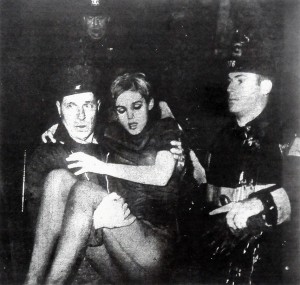
Fire Chief George Gekrish carries Edith Sedgewych from flaming building. She suffered smoke poisoning.
Instead I’d like to focus on Edie Sedgwick, 1965 which I consider to be one of Warhol’s greatest masterpieces. Like all of his masterpieces Edie Sedgwick, 1965 was a collaborative work, yet Andy’s hand was always present.
Authorship
it suits Warhol to abjure his own authorship and give someone else credit for his work, and that way he then is seen to not take a critical perspective
— Gary Needham
Abjuring his own authorship is one of Warhol’s most powerful artistic strategies. The Factory Circle has spent years rehashing whether Warhol had any creativity or input on the works that bear his name. Yet in spite of all the abjuring of authorship by both Warhol and his Circle, his body of work has an extraordinarily clear hand across the myriad works and media of his oeuvre.
Why are they Warhol films, you stupid son of a bitch?
— Paul Morrissey
The attributes J. Hoberman lists for my screen presence in Outer and Inner Space:
- lips glossed
- dark eyes shining
- enormous dangling earrings
- graceful neck
- Poised and elegant
- debutante
These are all Edie qualities. Andy didn’t give them to me. He didn’t “make” Edie Sedgwick. Or Jane Holzer. Or Candy Darling. But he created the media and the space for all of the many Factory personas to express themselves. He was like the indulgent babysitter who stays up all night cheering the kids as they sing their brilliant solos into hairbrushes. Andy’s gift was that he was able to be so symbiotic with so many people. Years after my time he’d have a remarkable interaction with Jean-Michel Basquiat. He didn’t write the Velvet Underground songs, nor Gerard Malanga’s poems. He was the curator, the ringmaster, the MC, the DJ, the Remix artist, who put each person-as-artwork on just the right stage.
Andy didn’t create my persona. Yet he’s the reason that 42 years after my death, if you Google my name, you’ll find an endless stream of Tumblr blogs, Pinterest boards, and more.
My life is proof of just what an asshole god can be. In Andy I made a deal with the Devil, and he gave me a year on the world’s biggest stage. A year that people are still overwhelmed by 4 decades later. Andy the Devil did a lot more for me that god ever did.
Andy Warhol, Hydrogen Bond of the Artworld
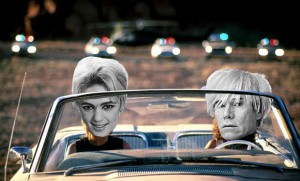
Leap Into The Void (Andy & Edie as Thelma & Louise taking Yves Klein’s legendary leap to epic scale)
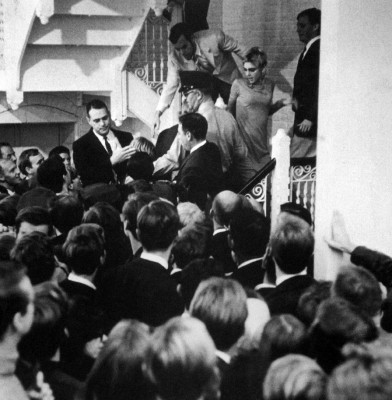
Me on the spiral staircase, with Andy just behind in the crowd, Institute of Contemporary Art, Philadelphia, October 8, 1965
At the last minute I decided the only thing to do was take down all the pictures so the paintings wouldn’t be ruined. So the grand opening was in fact just people! Edie was wearing a Rudi Gernreich dress, a long thing like a T-shirt with sleeves that must have been 20 feet long, rolled up and bunched at the wrists. Then, in this incredible performance, she began baiting the audience: she began to let her sleeves down over the crowd like an elephant’s trunk and then to draw them up again… teasing the crowd and working them up. And dancing and talking into the microphone, giving interviews.
Edie was astonishing. She was really in show business, giving all those people something to look at… and it was crucial because they had been getting more and more unruly for hours, angry, first of all, because there were no pictures on the wall. So she, in fact, became the exhibition. Andy was just terrified, white with fear. Edie was scared to death but she was adoring every minute. She was in her element. She carried on this sort of 40-minute soliloquy into the microphone.
— Sam Green, ICA Director
Celebrity, Sex, Death, Money, Time
Andy Warhol’s Edie Sedgwick is a work of art that intersects all 5 themes of Warhol MOOC: Celebrity, Sex, Death, Money, Time.
Die Young Stay Pretty
— Debbie Harry & Chris Stein
It should come as no surprise that it was Warhol portrait subject Debbie Harry who sang Die Young Stay Pretty. I may not have really appreciated it, but that’s the Faustian bargain I made with Andy. No sliding into old age. No decaying ungracefully.
At the end of my time, when I die, I don’t want to leave any leftovers. And I don’t want to be a leftover. I was watching TV this week and I saw a lady go into a ray machine and disappear. That was wonderful, because matter is energy and she just dispersed. That could be a really American invention, the best American invention – to be able to disappear.
— The Philosophy of Andy Warhol
I came about as close as anyone ever has to living out Andy’s desire to just disappear. Once again he had the capacity to enable the people in his Circle to do almost anything.
Other Artists
Other artists have used people as their media: Vanessa Beecroft’s Tableau Vivant’s share something with the Screen Tests and Andy’s other durational works. But in Beecroft the individual models, real and corporeal as they may be, tend to vanish into the whole of that landscape. In a Warhol tableau, each persona shines and sparkles in its own special way.In George Bernard Shaw’s 1912 play Pygmalion, Henry Higgins “sculpts” Eliza Doolittle, but Higgins hand is heavy. He makes of Doolittle something she was not before. If Warhol chisels his living sculptures at all, it is not to force them into new shapes, but like Michelangelo he simply removes the excess to reveal the figure already existing in the marble.
Outer and Inner Space
Some have argued that Andy took my short life away. Or at least that he didn’t “save me.” In every parallel universe I’ve been able to visit these 42 years since my death, I’m sorry to have to report that Edie always dies young. It’s only in the universes where Edie meets Andy, that Edie ever really matters. It’s only in the universes where I meet Andy that I ever really live.- Living with Legends: Hotel Chelsea Blog: Edie Sedgwick sends her best
- Fiction by Edie Sedgwick


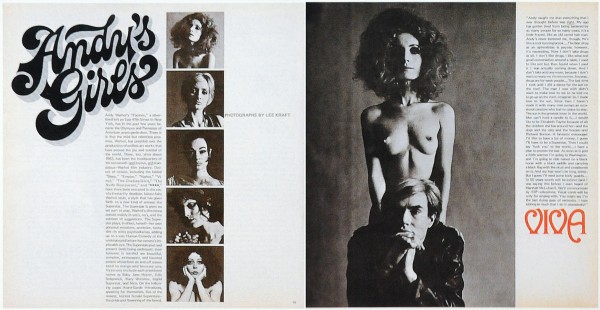

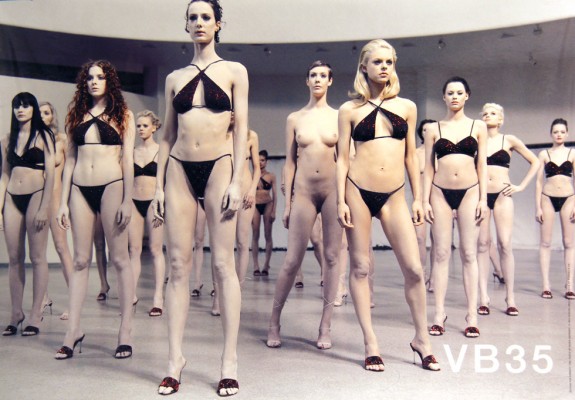
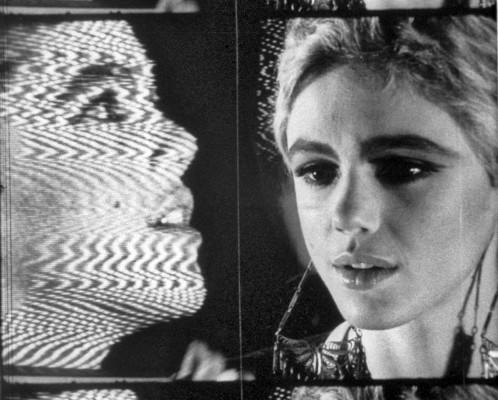
No comments yet. Be the first!